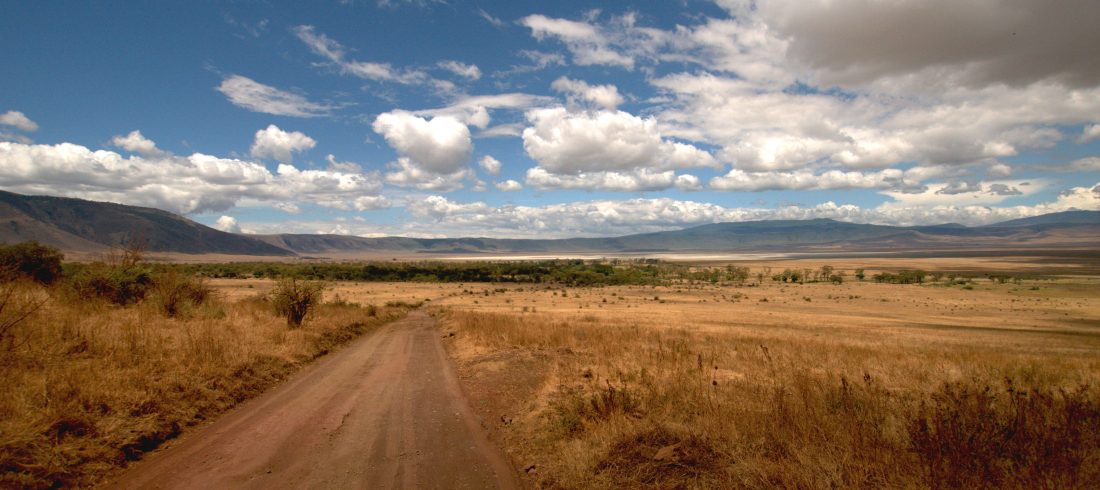
Called “the eighth wonder of the world” and stretching across 8,292 km2, the Ngorongoro Conservation Area in northern Tanzania boasts a blend of landscapes, wildlife, people and archaeology that is unsurpassed in Africa. The volcanoes, grasslands, waterfalls and mountain forests are home to an abundance of animals and to the Maasai people.
Ngorongoro Crater (wiki) is one of the world’s greatest natural spectacles; its magical setting and abundant wildlife never fail to enthral visitors.
It borders the Serengeti National Park to the north and west. A few hours drive to the east takes you to the town of Arusha which nestles at the foot of Mount Meru, within view of Mount Kilimanjaro. Arusha is known as the gateway to the Ngorongoro Conservation Area and the Northern Parks.
The Ngorongoro Crater is nestled in a range of extinct volcanoes which rise to heights of more than 3,500m. It is the largest un-flooded and unbroken caldera in the world – 19.2 km in diameter, 610m deep and 304 sq km in area.
The rich pasture and permanent water of the crater floor supports a large resident population of wildlife of up to 25,000 – predominantly grazing animals.
These include wildebeest, zebra, gazelle, buffalo, eland, kongoni and warthogs.
The swamps and forest provide additional resources for hippo, elephant, waterbuck, reedbuck and bushbuck, baboons and vervet monkeys.
Predatory animals – lion, leopard, cheetah, and serval cats live off the abundant wildlife and average packs of hyena roam the crater, making their own kill and scavenging from others. Only bull elephants descend regularly to the crater floor.
The large breeding herds wander throughout the forest rim where they find the most suitable food. The black rhinoceros in the crater are relatively safe and the number is approaching thirty.
These Rhinos are the ones you are most likely to se during your wildlife adventure in Tanzania. Before it collapsed, the Ngorongoro volcano was estimated to have been 4587m above sea level.
Some of the craters in the area such as Ngorongoro, Empakaai and Olmoti are not true craters but are actually calderas. A caldera is formed when a circular fault in the wall of the volcano causes it to collapse into itself to form a crater floor.
The short rains are from November to December and the long rains from February to April, the latter generally being considered the off season. However Late February, early March is usually a good time to see the migration on the plains. In turn, this attracts large number of predators and results in spectacular interactions between predators and prey.
The dry season holds its own beauty. In Africa the dry season is the best time for game viewing because the animals are concentrated along permanent water sources, but areas inside the crater always have resident game that remains around the lakes all year round.
Location:
In northern Tanzania. Serengeti, Lake Manyara and Tarangire National Parks are close neighbours.
How to get there:
By road, charter or scheduled flight from Arusha, Dar es Salaam or Zanzibar. The distance from Arusha to Lodoare Entrance Gate by road is 160km. As of recently, the entire journey is on tarmac and it takes about two hours. Unless you stay on the main roads, which are gravelled, a 4×4 vehicle is essential when entering the Ngorongoro Conservation Area and the Serengeti National Park.
What to do:
Game drives, walking safaris, cultural visits to Maasai “bomas”, cultural tours, picnicking, bush lunch/dinner, mountain tours.
When to go:
Rainy season from November to April. The short rains are from November to December and the long rains from February to April. Dry season from May to October)
Accommodation:
Special campsites inside the park. Several guesthouses and campsites in the areas close by.